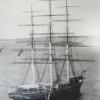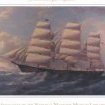-
Posts
995 -
Joined
-
Last visited
About Sailor1234567890
- Birthday 05/05/1977
Profile Information
-
Gender
Male
-
Location
Halifax NS, Canada
-
Interests
Sailing ships, boating, sailing, canoeing, boatbuilding in 1:1 and various other scales.
Recent Profile Visitors
-
I was going to suggest beeswax for the fraying but now I see there's actually a product for that purpose. Of course there is.
- 165 replies
-
- Red Jacket
- Marine Model Company
-
(and 2 more)
Tagged with:
-
My father had that exact model on the mantle in the dining room when I was growing up as a kid. He never did finish it. It's still in the room I used to live in, sitting on a printer by the door. I saw it a few weeks ago when I was home. That model brings back fond memories of my dad. Thanks. I'll be following along.
-
 tarbrush reacted to a post in a topic:
Cutty Sark by Richard Dunn - 1/40 scale - scratch built semi-kit prototype
tarbrush reacted to a post in a topic:
Cutty Sark by Richard Dunn - 1/40 scale - scratch built semi-kit prototype
-
I presume some construction explanation and reference to the original. The photo opportunity to back up her construction drawings is unparalleled for extreme clippers. Some have photos in the builder's yard etc. but we still have Cutty Sark here. It's always stumped me why nobody has published such a book yet. There are plenty of books like this, new and old, plenty about Cutty Sark. She's surely worthy of this treatment. So what's taken so long, considering she's still with us and available for direct reference. Details such as her cabin fit-out or the delicate, decorated shape of her deadeyes can be captured. I suppose being digital, her rig can be portrayed both in her tea rig as well as her wool clip rig. Today's technology means this project has so much potential that didn't exist 20 years ago.
-
I went to a nautical college. The entire library was "the nautical section". It was the best I can remember ever seeing. The university library also had an incredible nautical section. I spent hours in both. This sounds like THE book I wish I could have found. I wish you every bit of luck, skill and whatever else is required to bring this off to your satisfaction. Daniel.
-
FINALLY!!!! Will there be an element of Boudriot's 74 Gun Ship to it as well? Schematics and scale drawings, lines plans, sail plans, rigging plans... ooooh, all the good stuff..... 1:64 scale would be nice so as to model from if you just can't decide. I can't wait for this one. Pretty sure you can count on a few others aside from me to purchase a copy.
-
 Jeronimo reacted to a post in a topic:
LE CENTAURE 1783 by Jeronimo
Jeronimo reacted to a post in a topic:
LE CENTAURE 1783 by Jeronimo
-

LE CENTAURE 1783 by Jeronimo
Sailor1234567890 replied to Jeronimo's topic in - Build logs for subjects built 1751 - 1800
Well I'm going to have to pull up a stool here and order a pint. -
Rob, In your view, which is his best clipper? By best clipper, I mean the one that best exemplifies the type. To me that rules out medium shapes and places us squarely in the extreme clipper domaine. Pretty, fast, carrying capacity etc. are all qualities to consider. I'm more a fan of the British "little toy clippers" and of course, Cutty Sark exemplifies the type and is still around to be able to refer to. What's the American "ultimate" clipper similar to how CS is (to me) the ultimate tea clipper. If Warren Buffet has me in his will, I'll replicate CS. What McKay ship would you replicate 1:1 given the chance?
-
So will you build the bomb as Harvey or Moth? I'd build Lady Nelson as Witch of Endore as he escapes down the Loir and recaptures her. Not sure what details the book has to add details to the build to make her either Harvey or Moth.......
- 66 replies
-
- Adder
- Vanguard Models
-
(and 1 more)
Tagged with:
-
 daHeld73 reacted to a post in a topic:
HMS ROYAL KATHERINE 1664 by Doris - 1/55 - CARD
daHeld73 reacted to a post in a topic:
HMS ROYAL KATHERINE 1664 by Doris - 1/55 - CARD
-
 uscharin reacted to a post in a topic:
Cutty Sark by uscharin - Sergal - 1:78
uscharin reacted to a post in a topic:
Cutty Sark by uscharin - Sergal - 1:78
-
No way of discerning from the images but my understanding of those tried up booms is that the inner boom iron is simply hinged to allow it to pop out when required. Once the boom is inboard, the outer ring will be quite loose of course so plenty of play once you hinge open the inboard iron.
- 431 replies
-
- Flying Fish
- Model Shipways
-
(and 2 more)
Tagged with:
-
Lord Cochran used the low freeboard of his Speedy to take on Gamo whose guns fired over Speedy. He'd approach as the gunners fired, then when they ran up on deck to board him, he's haul off and start shooting grape at them. They'd run back below to shoot back and he'd haul alongside again shooting up at the hull and through the deck again. Same issue here. No idea on the details of this action though because I'm not familiar enough with each vessel. I remember sailing into Oswego harbour in St Lawrence II chasing Blackjack. Pretty sure it was Blackjack.
-
Rob, Do you know why there are upper and lower channels in the chains? Why not just angle the chainplate back toward the hull from the upper and fasten where the lower end is fastened, bypassing the lower channel? I must be missing something. I don't remember ever seeing that before so it struck me as odd. Or maybe I've seen it and it never stood out before. Seems unusual to me though. Is it? Daniel
-
 Jared reacted to a post in a topic:
Flying Fish by Jared - FINISHED - Model Shipways - 1:96
Jared reacted to a post in a topic:
Flying Fish by Jared - FINISHED - Model Shipways - 1:96
-
 ClipperFan reacted to a post in a topic:
Flying Fish by Jared - FINISHED - Model Shipways - 1:96
ClipperFan reacted to a post in a topic:
Flying Fish by Jared - FINISHED - Model Shipways - 1:96
-
That's it Rick. The booms are triced up like that to allow access to furl the sail beneath it. The difference between furling to the bunt or not plays a part as well of course but the main reason they're triced up is to furl the sail beneath it. They're then stowed back down on top of the sail when it's furled. And your guess about hanging them below the yard such as in Cutty Sark was for that reason as well.
- 431 replies
-
- Flying Fish
- Model Shipways
-
(and 2 more)
Tagged with:
About us
Modelshipworld - Advancing Ship Modeling through Research
SSL Secured
Your security is important for us so this Website is SSL-Secured
NRG Mailing Address
Nautical Research Guild
237 South Lincoln Street
Westmont IL, 60559-1917
Model Ship World ® and the MSW logo are Registered Trademarks, and belong to the Nautical Research Guild (United States Patent and Trademark Office: No. 6,929,264 & No. 6,929,274, registered Dec. 20, 2022)
Helpful Links
About the NRG
If you enjoy building ship models that are historically accurate as well as beautiful, then The Nautical Research Guild (NRG) is just right for you.
The Guild is a non-profit educational organization whose mission is to “Advance Ship Modeling Through Research”. We provide support to our members in their efforts to raise the quality of their model ships.
The Nautical Research Guild has published our world-renowned quarterly magazine, The Nautical Research Journal, since 1955. The pages of the Journal are full of articles by accomplished ship modelers who show you how they create those exquisite details on their models, and by maritime historians who show you the correct details to build. The Journal is available in both print and digital editions. Go to the NRG web site (www.thenrg.org) to download a complimentary digital copy of the Journal. The NRG also publishes plan sets, books and compilations of back issues of the Journal and the former Ships in Scale and Model Ship Builder magazines.




